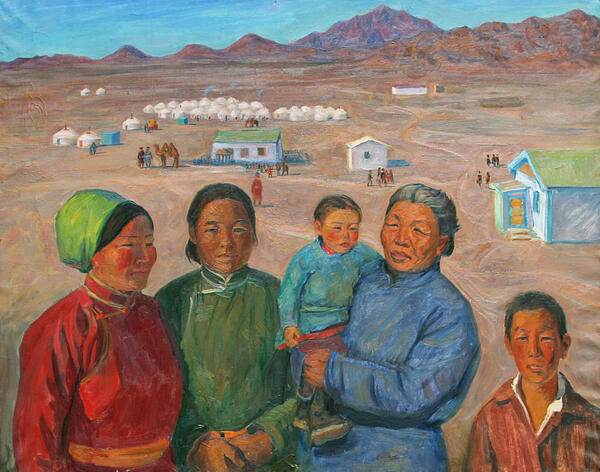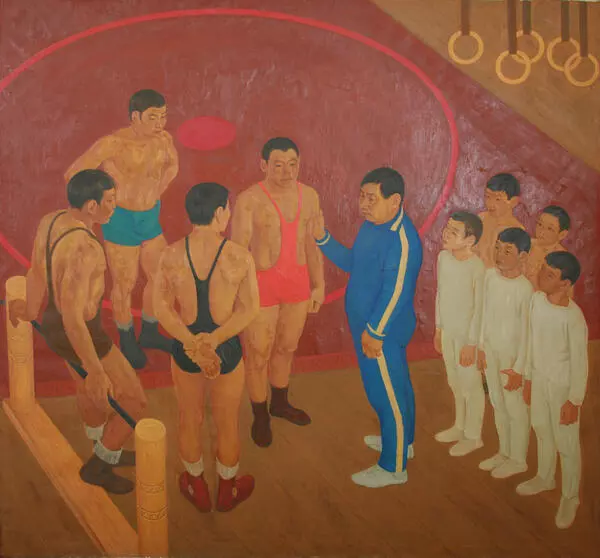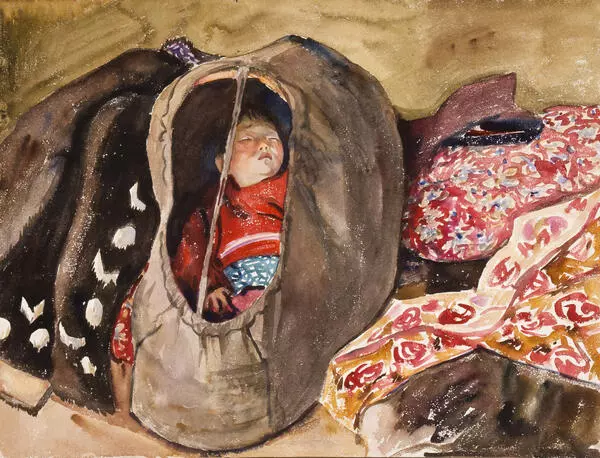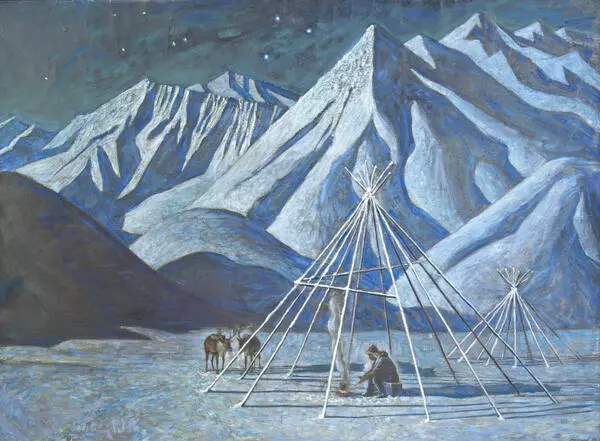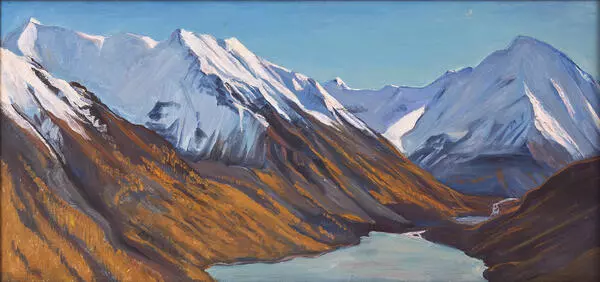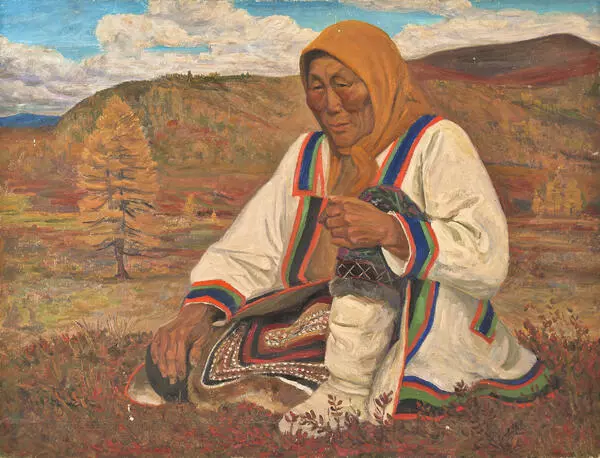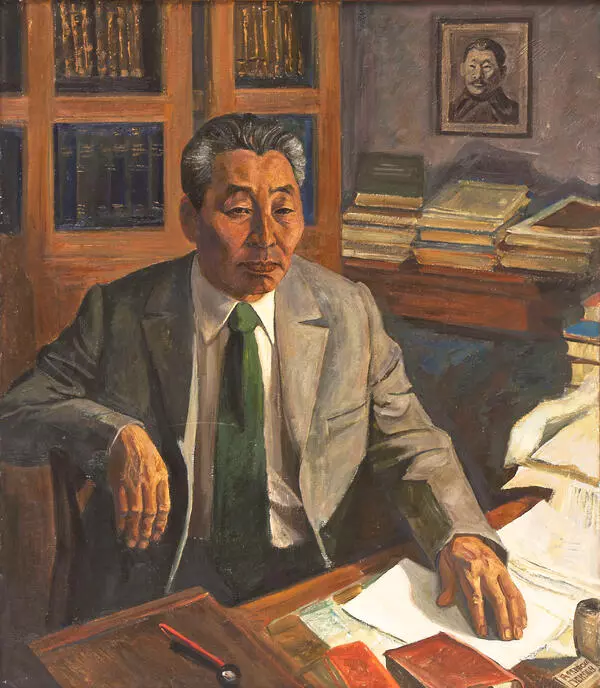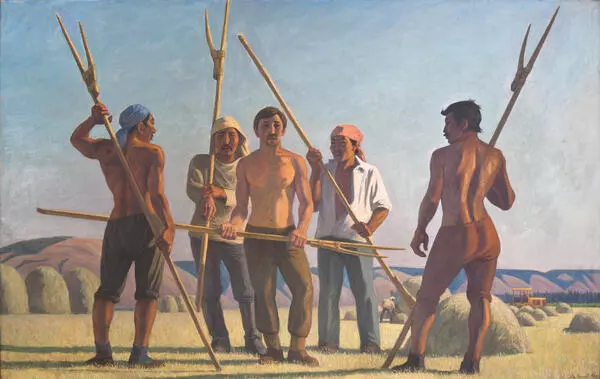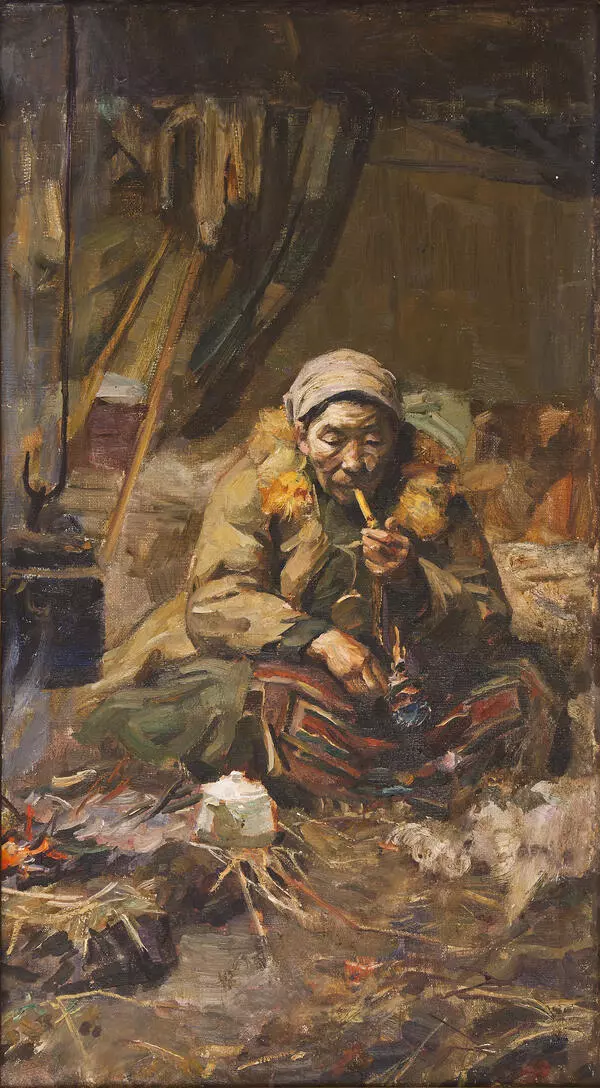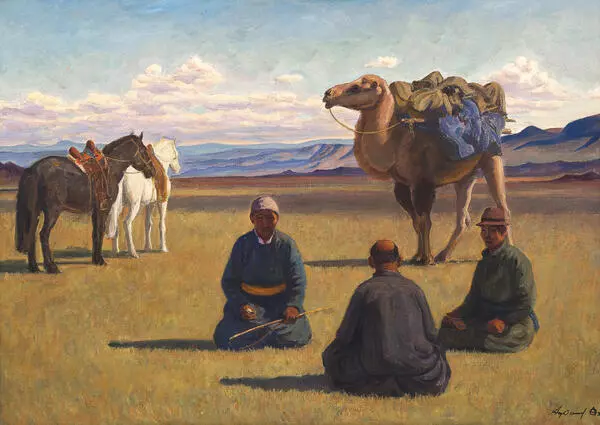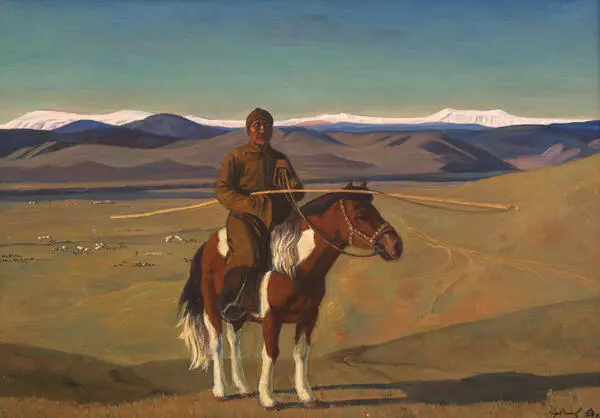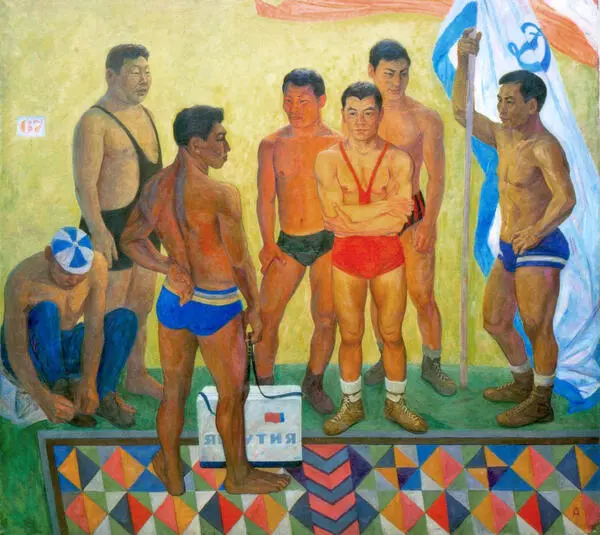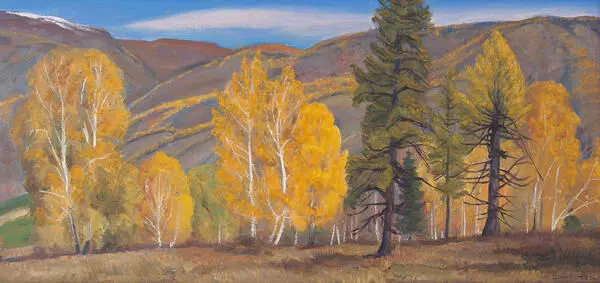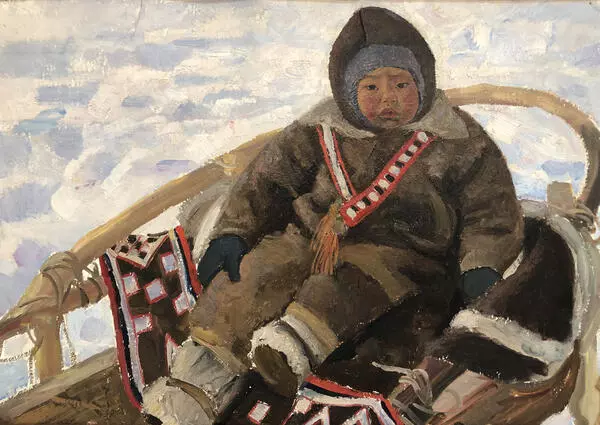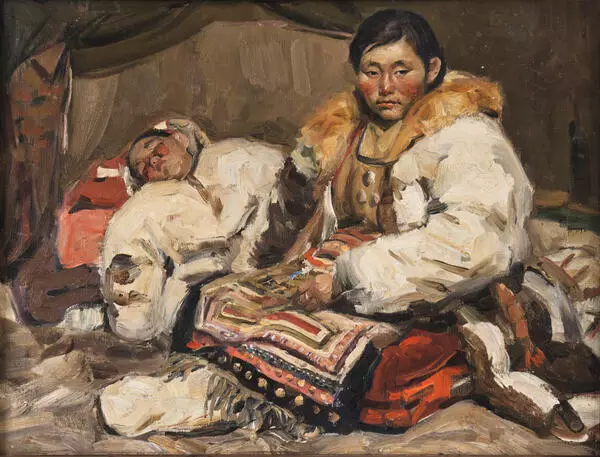Afanasy Osipov is an authoritative Yakut painter, a People’s Artist of the USSR, and the winner of the Ilya Repin State Prize of the RSFSR. He was born on February 28, 1928 in Gorny Ulus in Yakutia, studied painting in Moscow, and then returned to his homeland. Here Osipov taught at the Yakut Art School, traveled a lot around the republic, and also went on business trips abroad.
During the trip to Mongolia, Osipov wrote a series of sketches, genre works, and landscapes. Genre paintings are paintings that depict scenes from everyday life. The artist captured local residents, i.e. the Arats, their homes, and the nature of this region.
One of these paintings is “Women of Sevray Somon”, which was painted by the artist in 1978. The Mongolians call “somon” or “sum” a city with adjacent territories, as well as the central estates of collective farms. Sevray Somon, which was given the name by the mountain towering here, is densely populated by nomad standards. In the middle plan, there are temporary dwellings of the Arats, as well as permanent buildings, such as a school, a hospital, and a museum.
In the foreground, the artist has depicted the Mongolian women of three ages, namely: young, mature, and elderly. They are dressed in the national costumes of the Arats. The weather in somon is changeable. It is hot during the day and cold at night, and clothing should be suitable for all conditions. In summer, local residents wear a light tarlak robe, while in spring and autumn they prefer a cotton robe called “hovontay deel”, and in winter - a sheepskin robe resembling a fur coat, the so-called “tsagaan nehiy deel”. The boy who stands next to the women on the contrary appears in a shirt of a modern cut. Heroes are surrounded by a sun-dried plain with sparse bushes. On the horizon, one can see the Hongoryn Els dunes, which stretch for more than a hundred kilometers and reach a height of one hundred meters. These sands are called singing. In windy weather, quartz particles rub against each other, thus making a special singing whistle.
In the distance, behind the three women, one can see Mount Savray. Coincidentally, in these places, the National Park Gurvan-Saikhan-Uul will be created in 1993. This word means “three beauties” in Mongolian.
During the trip to Mongolia, Osipov wrote a series of sketches, genre works, and landscapes. Genre paintings are paintings that depict scenes from everyday life. The artist captured local residents, i.e. the Arats, their homes, and the nature of this region.
One of these paintings is “Women of Sevray Somon”, which was painted by the artist in 1978. The Mongolians call “somon” or “sum” a city with adjacent territories, as well as the central estates of collective farms. Sevray Somon, which was given the name by the mountain towering here, is densely populated by nomad standards. In the middle plan, there are temporary dwellings of the Arats, as well as permanent buildings, such as a school, a hospital, and a museum.
In the foreground, the artist has depicted the Mongolian women of three ages, namely: young, mature, and elderly. They are dressed in the national costumes of the Arats. The weather in somon is changeable. It is hot during the day and cold at night, and clothing should be suitable for all conditions. In summer, local residents wear a light tarlak robe, while in spring and autumn they prefer a cotton robe called “hovontay deel”, and in winter - a sheepskin robe resembling a fur coat, the so-called “tsagaan nehiy deel”. The boy who stands next to the women on the contrary appears in a shirt of a modern cut. Heroes are surrounded by a sun-dried plain with sparse bushes. On the horizon, one can see the Hongoryn Els dunes, which stretch for more than a hundred kilometers and reach a height of one hundred meters. These sands are called singing. In windy weather, quartz particles rub against each other, thus making a special singing whistle.
In the distance, behind the three women, one can see Mount Savray. Coincidentally, in these places, the National Park Gurvan-Saikhan-Uul will be created in 1993. This word means “three beauties” in Mongolian.

